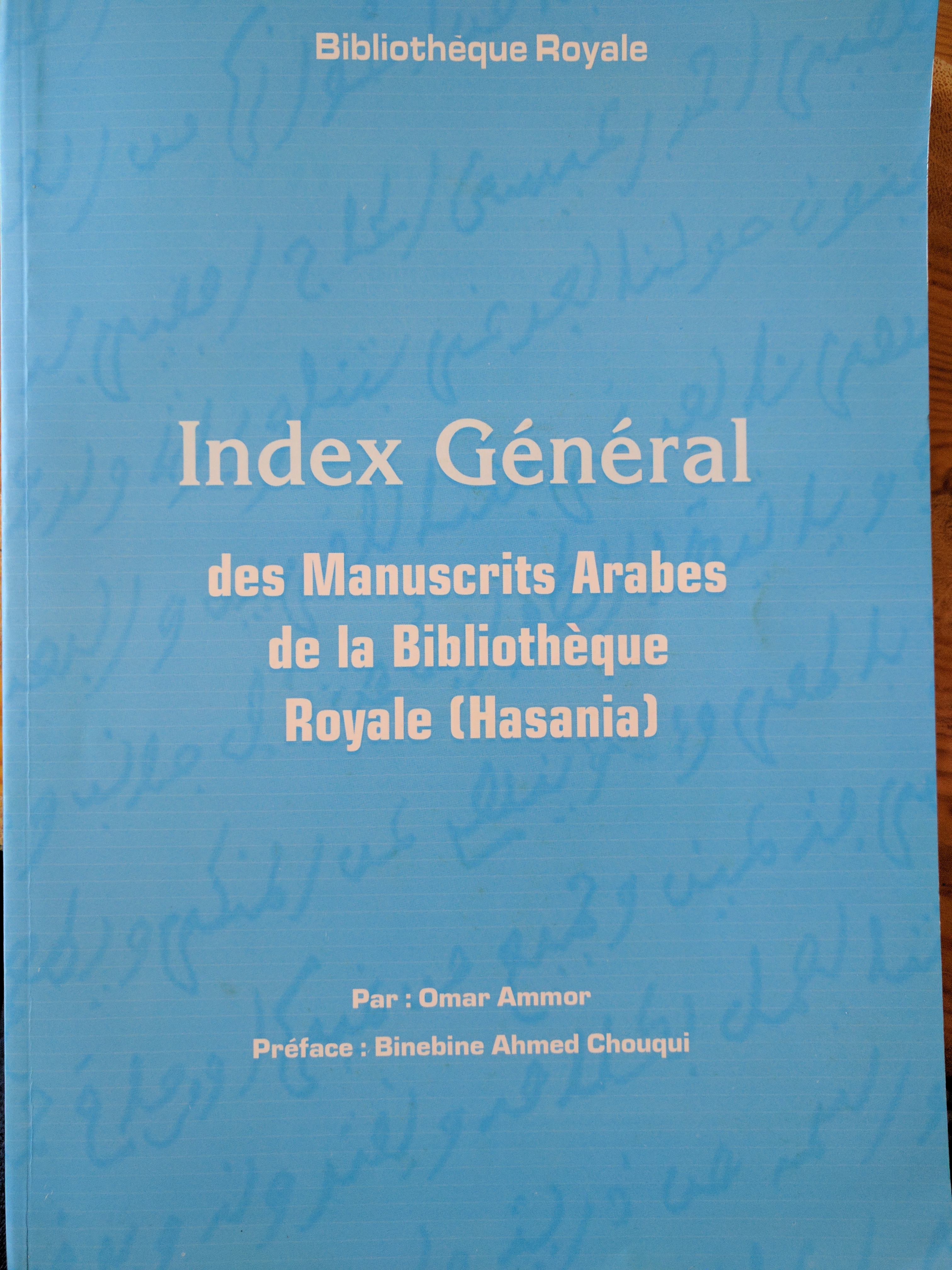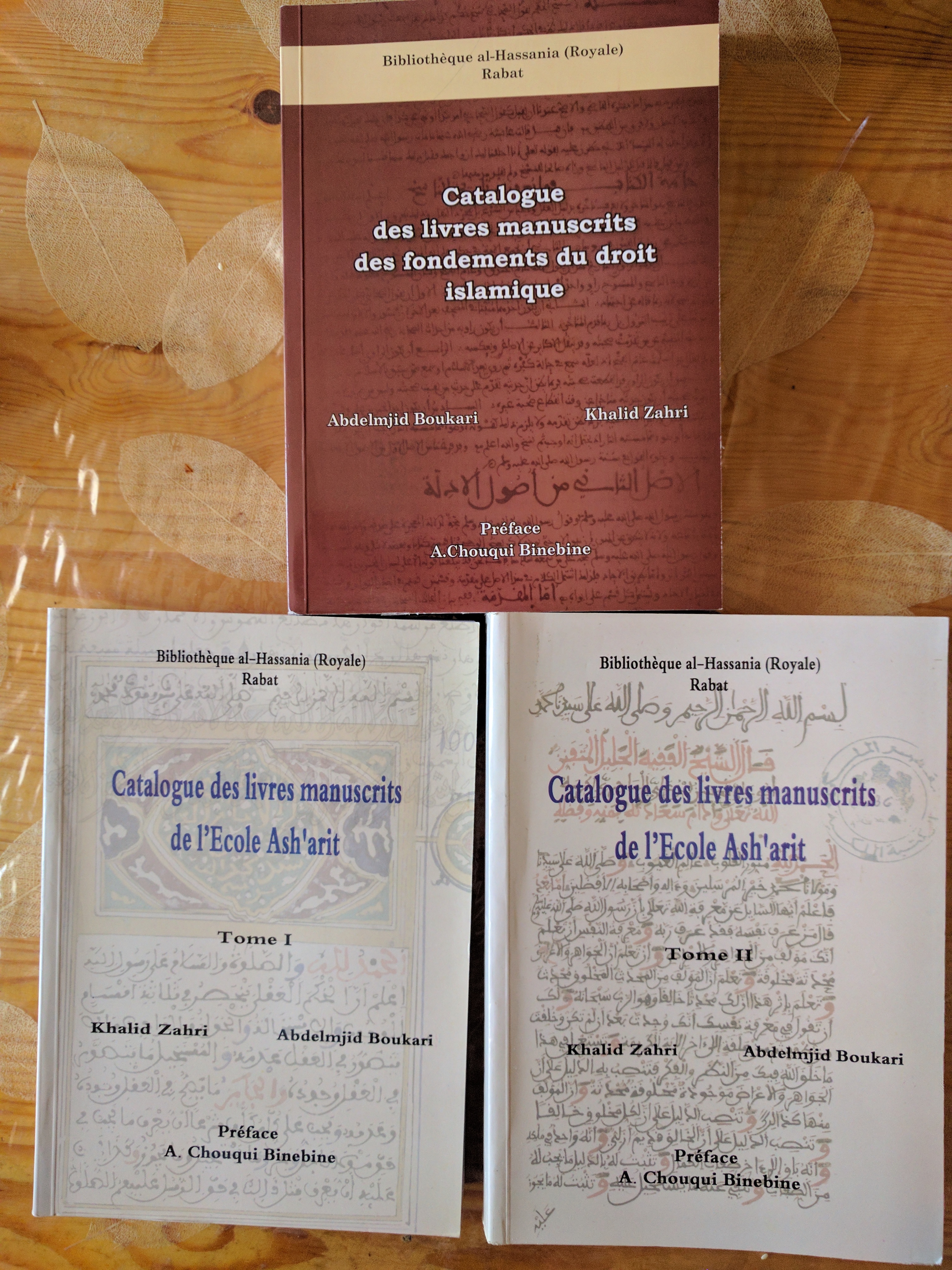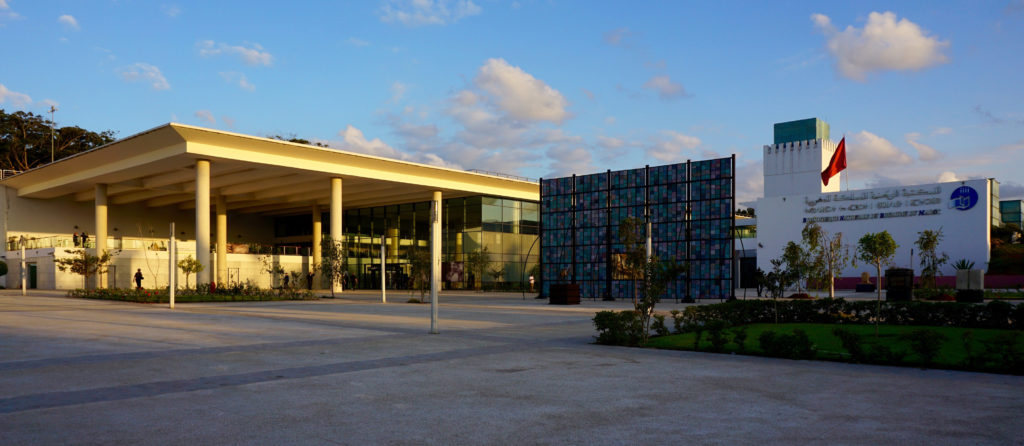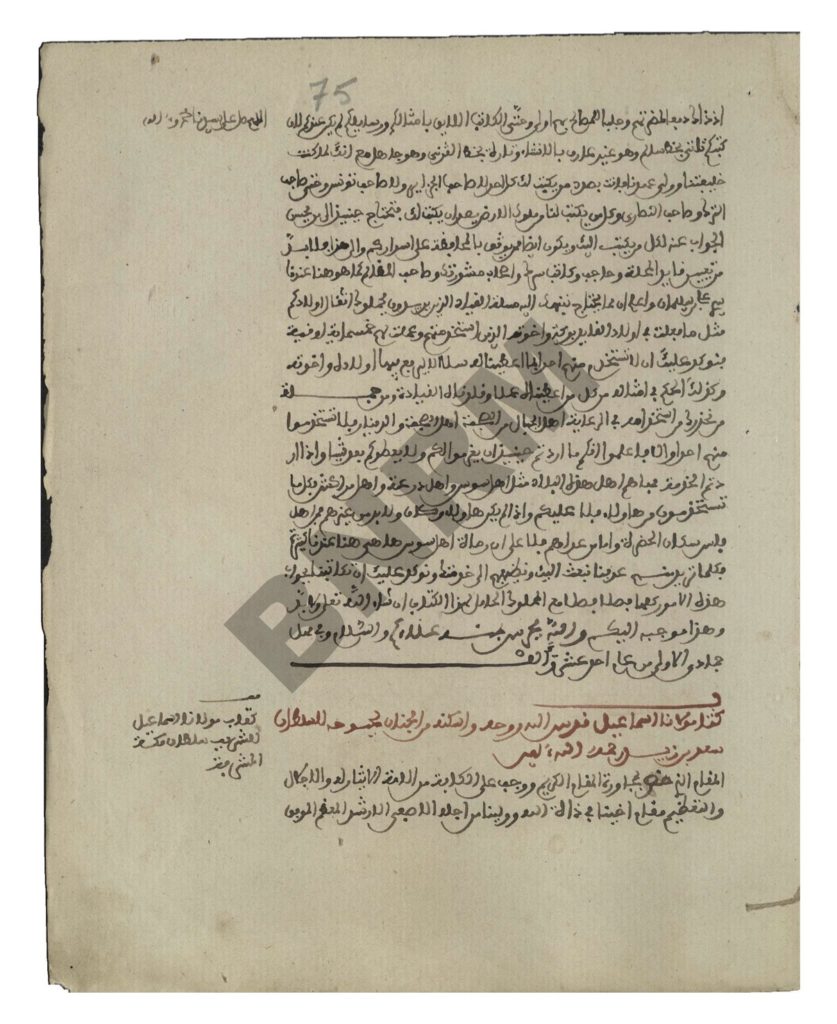One of the major manuscript collections in Morocco is currently the property of His Majesty, King Mohammad VI. The Khizana al-Hasaniyya or the Bibliothèque Royale as it is known, is housed in the royal palace in Rabat and directly attached to the royal residences. The Researcher Annex where most guests of the library work, is detached from the palace yet located within the palatial environs.
Due to the personal nature and physical location of this library, it is necessary for the aspiring researcher to observe security protocol and to put their best professional foot forward. Like many things in Morocco, the rules will not be explained in detail but everyone will act as though you know them. When in doubt, ask questions.
Basic Details
The Khizana al-Hasaniyya is part of the Qasr al-Malik or Palais Royale in Rabat and consists of the main manuscript library attached to the royal residences and the Researcher Annex. The Researcher Annex is opened from 9am-4pm Monday – Friday. Most work is done in the Researcher Annex, a new building completed sometime after 2014 and staffed with computers for manuscript consultation. Be advised that electronic devices such as phones, tablets, and laptops are forbidden in the Researcher Annex, and all bags must be stored in the small cupboard in the corner of the Researcher Annex.
At the time of the visit, the Khizana al-Hasaniyya manuscript library was open only to those researchers with specific codicological research though it is possible for one of the librarians to give you a tour of the Khizana. The manuscripts they have on display are stunning, from early Qur’ans to musicology texts to a copy of Ibn Khaldun’s al-Muqaddima copied by one of his students and annotated in the margins by Ibn Khaldun himself.
Researcher cards can be obtained by contacting the director of the Khizania al-Hasaniyya, Dr. Ahmed Chouqui Binebine (a.binebine@gmail.com), and requesting a meeting with him to discuss your research. Dr. Binebine speaks Darija (Moroccan dialect of Arabic), Fusha (Modern Standard Arabic or MSA) and French; if you do not speak these languages, it is best to arrange your meeting with the help of another scholar with current researcher privileges; that way, they can advocate on your behalf while translating as needed.
If you arrive in Morocco and you don’t have someone in country who can pull strings for you at the Hasaniyya, contact Dr. James Miller, the director of MACECE in Rabat. He is used to helping Americans make connections with Moroccans and may know someone who can help.
Bring your passport and a copy of the passport face page and the page with your date of entry to Morocco or your Carte de Séjour, your research clearance and/or Lettre D’Attestation, and two passport sized photographs to your meeting. Unlike the BRNM, there is no fee associated with this card. It is unclear as to whether or not researcher cards are valid for a specific amount of time or if this time can be negotiated.
For the record, I was able to gain a researcher card valid for three months. This card is an index sized paper card written in Arabic and stamped with the official seal; you will need it for subsequent visits to the library.
During your meeting, you can also request a copy of the General Index for the Khizana al-Hasaniyya along with other catalogs relevant to your research. This is invaluable as copies of the General Index are quite hard to come by in the United States (Emory and the Metropolitan Museum of Art have copies of the General Index).

While the General Index just lists the manuscripts alphabetically and with little information about the manuscript, the more in-depth catalogs, such as the catalogs on Ash’arite manuscripts and those concerned with Islamic law, are much more detailed. You can request copies of these subject-specific indexes from Dr. Binebine.

Dr. Binebine and other librarians at the Khizana may also give you additional texts, such as their publications on codicology. Dr. Binebine’s 2015 book, Histoire des bibliotheques au Maroc, is worth having for any medievalist or manuscript specialist.
The dress code is business wear, with many Moroccan researchers wearing traditional Moroccan clothes such as djellabas. Looking like you have a valid reason to go to the royal palace will help convince the guards and employees that you are not some random tourist hoping to see the king.
For those spending the day or at least the lunch hour at the Khizana al-Hasaniyya, there is a small arcade opposite the soccer field near the Researcher Annex where you can get a pizza (15 MAD) and fresh orange juice (10MAD) as well as a sandwich on occasion or snacks from the nearby hanout (kiosk). It is best to be discreet about drinking water in the Researcher Annex just to avoid any problems.
Getting There
The Qasr al-Mālik is a massive compound located at the end of the Avenue Mohammed V in downtown Rabat and is guarded around the clock. For your first visit, you will need to present your passport and tell the guard that you have an appointment with the director of the Khizana; the guard will then phone to confirm your visit. For subsequent visits, saying that you are a researcher (chercheur/chercheuse) at the library and presenting your researcher card is enough to get in, though it never hurts to have your passport and your Lettre D’Attestation in case someone asks for it.
Unlike European palaces, the Qasr al-Mālik is more akin to a city within a city, making it difficult for the first time visitor to get to where they are going. For the person going alone, it is best to take a petit taxi to the main gate, Bab Soufara, and then have the cab driver continue through the gate and take you directly to the Khizana.
NB: Make sure the driver takes you to the right spot; simply asking for the Khizana al-Hasaniyya might bring you to the Researcher Annex or it might bring you to the Khizana itself. The same is true when it comes to asking for directions inside the compound. If the cab driver wants to leave you at the gate, it is a 10-15 minute walk to the Researcher Annex from Bab Soufara.
Conducting Research
As previously mentioned, the physical manuscripts are largely off-limits to most researchers, meaning that the majority of manuscript work is now done digitally. To request a copy of the manuscript, you will need to fill out a small request form at the desk in the Researcher Annex and give it to the librarian sitting there; they will then call up the digital copies of the manuscript and load them on one of the computers lining the walls. When the files are ready, the librarian will call you over to the computer.
To request digital copies of the manuscripts, you will need to write directly to the director of the Khizana, Dr. Binebeine, and state what it is you want and why you need it. Do not email Dr. Binebine but present a printed and signed copy of your letter to the librarian at the Researcher Annex and ask them to give it to Dr. Binebine. The librarian will then convey your request and, if it is approved, a digital copy of the manuscript will be given to you within 24-48 hours.
Prior to 2013, digital copies were presented to researchers on CD but as of March 2017, a colleague was able to load the files directly onto a USB stick.
NB: One might be limited to the number of folia they are allowed to request per manuscript. Some have reported that they were only able to request 10 folia of a manuscript, while others said they were able to get 40-50 folia. As such, plan your requests and research accordingly.
Language
The Khizana al-Hasaniyya runs on Arabic, especially Darija. The various manuscript indexes, from the General Index to the more thematic indexes of manuscripts, are in Arabic, along with the manuscript request forms. Researchers should have a solid command of the Arabic script and decent penmanship in order to correctly write out their requests.
Spoken French can get one by in a pinch, especially if one’s vocabulary related to manuscripts is not as strong in Darija or Fusha (MSA) as it is in French. For those researchers who are Caucasian or black, the staff may speak to you in somewhat broken French, assuming that you either come from France (if white) or one of the francophone African countries (if black).
The computers in the Researcher Annex all run Microsoft OS and are in French, not English. The screens are touch screens, meaning that you can pinch and zoom in on the images, as well as swipe back and forth. However, most of the other researchers in the Annex use the mouse so it’s probably best to follow their lead.
When it comes to writing a manuscript request letter, the letter must be in Arabic (MSA) or French. If you are unsure about the protocol or language within the letter, ask the librarian in the Researcher Annex if they have a copy of a request on file for you to use.
Misc.
The Royal Palace is a trip for a medievalist not in the least because it is a functioning palace on the scale of medieval administrative cities. Those who live on the palace grounds and who work there inherited the position from their family members, many of whom may have been part of the royal slave retinues just under two hundred years ago. To see the Royal Palace in Rabat gives one a good appreciation for the scale of medieval administrative cities like Baghdad, Samarra, Qayrawan, Cairo, Fez, and Marrakech and for the way in which such palaces were cities in their own right.
For additional resources on the Hasaniyya as well as other manuscript libraries in Morocco, see J. Hendrickson and S. Adil, “A Guide to Arabic Manuscript Libraries in Morocco: Further Developments,” (2013)


